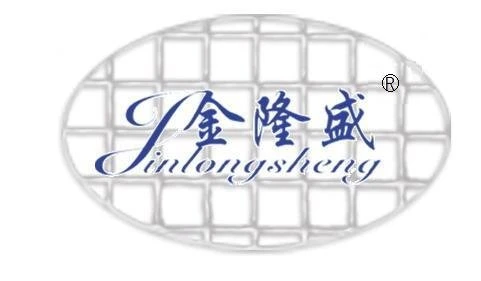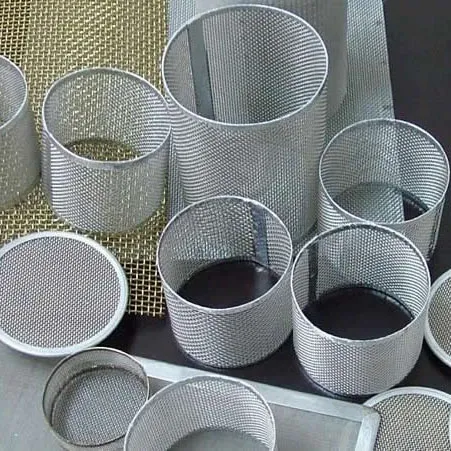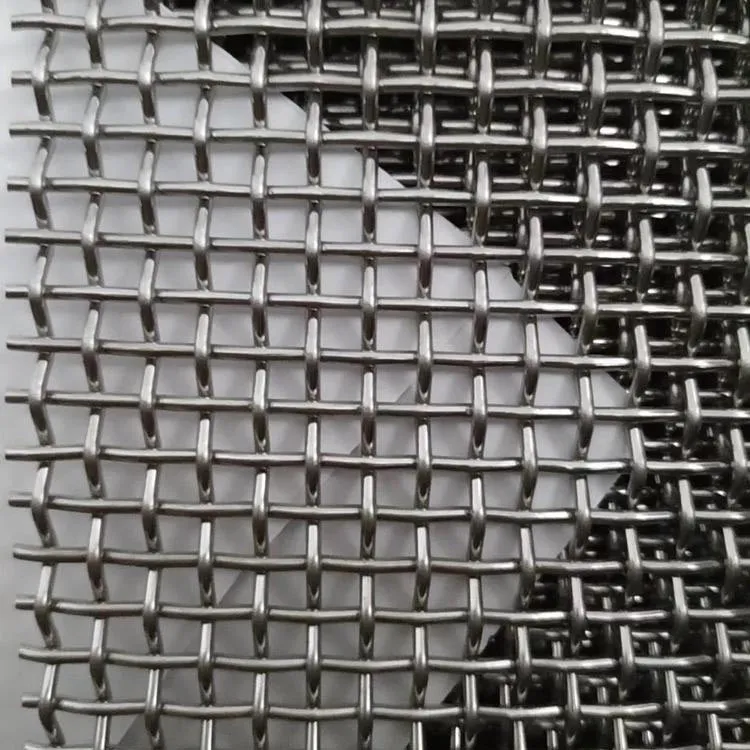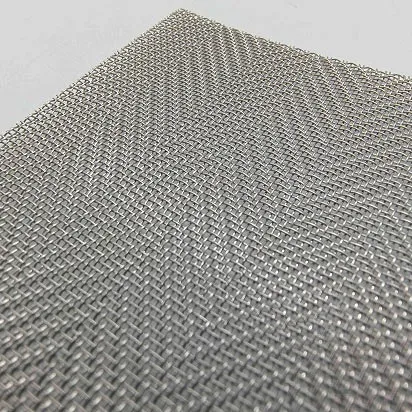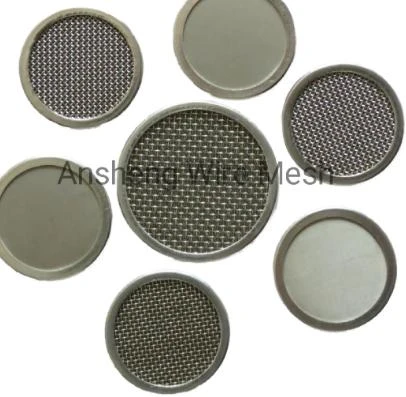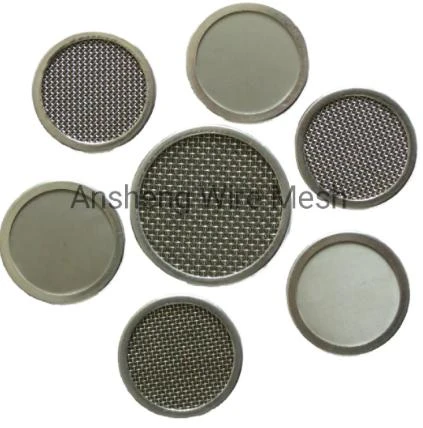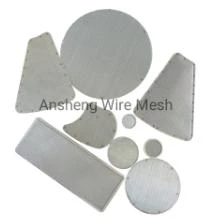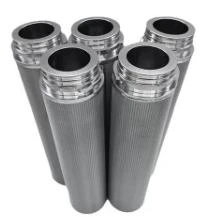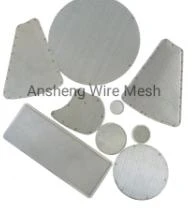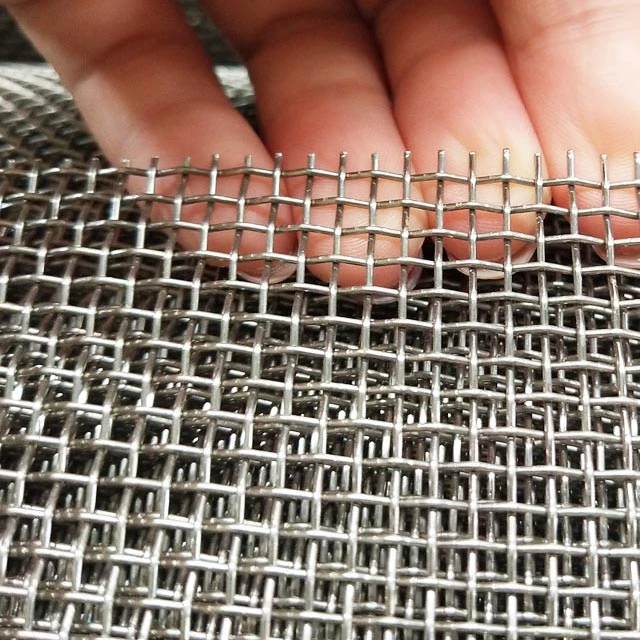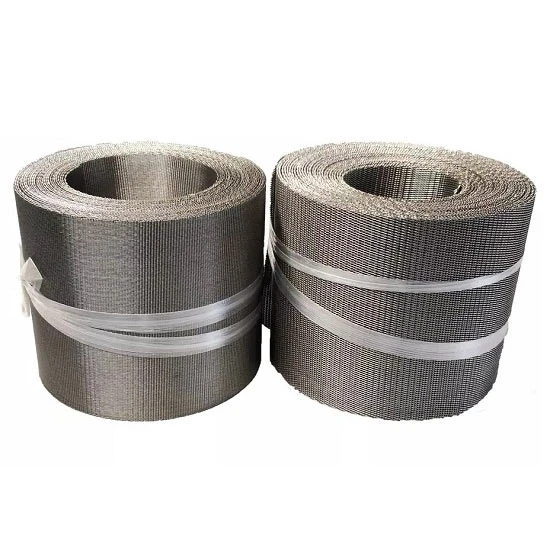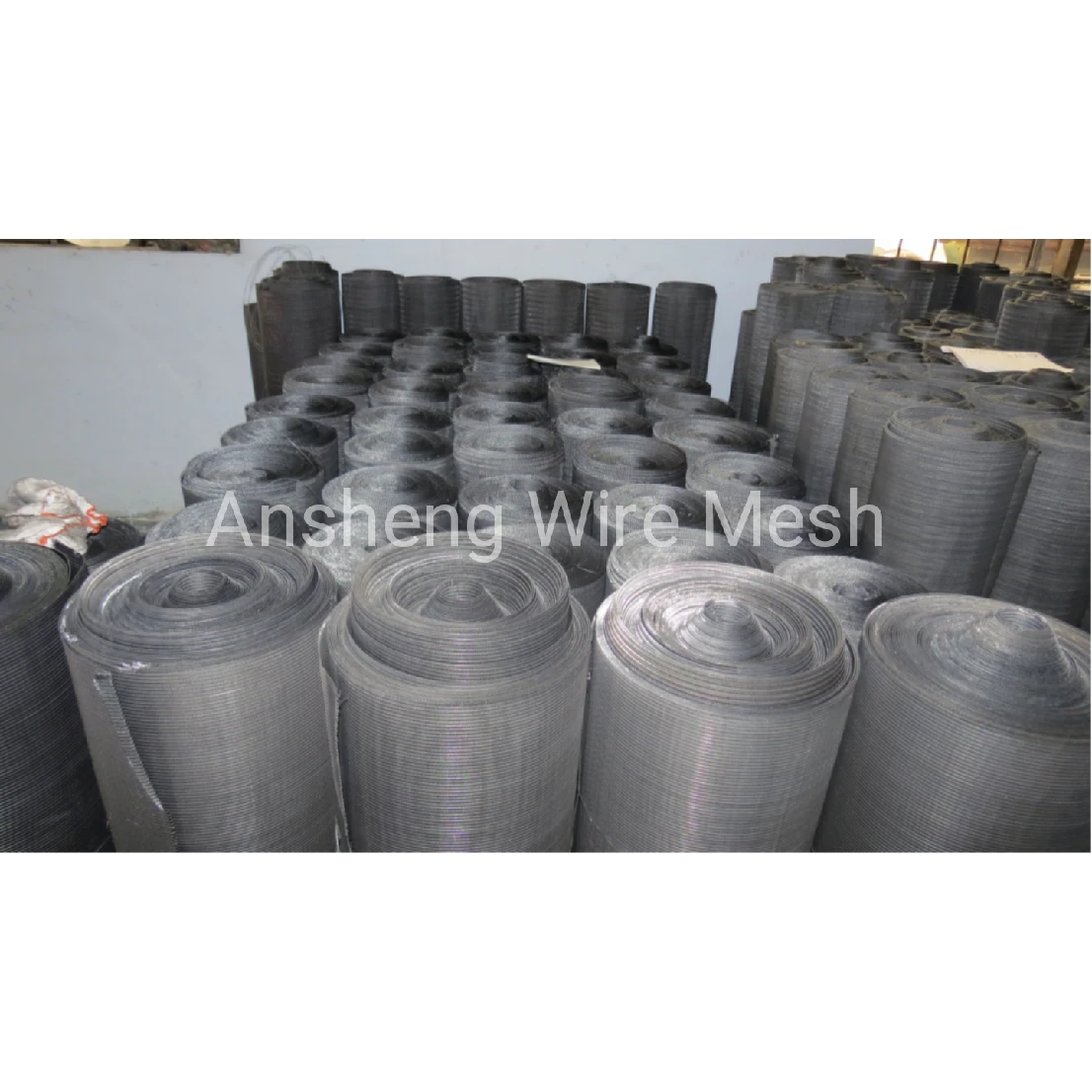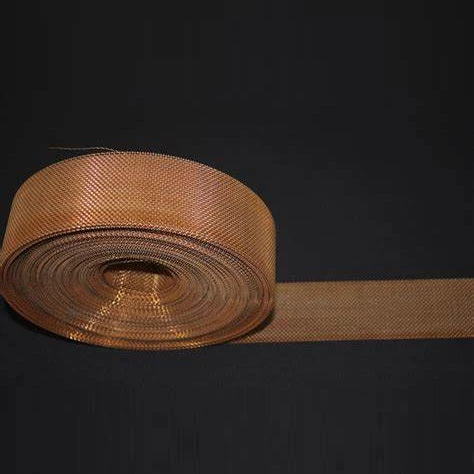The Unrivaled Versatility of Perforated Metal in Modern Industries
In the realm of advanced material solutions, perforated metal for sale stands as a testament to engineering ingenuity, offering an unparalleled blend of functionality, aesthetics, and durability. Defined by its unique pattern of precisely punched holes, this versatile material transcends conventional applications, serving as a critical component across a myriad of sectors, from the intricate demands of aerospace to the robust requirements of heavy industry. Its inherent adaptability, stemming from customizable parameters such as hole size, shape, pitch, and material composition, positions perforated metal as an indispensable asset for architects, engineers, and manufacturers alike.
The increasing demand for materials that offer both structural integrity and specific functional attributes—such as controlled airflow, noise reduction, light diffusion, or filtration efficiency—has propelled perforated metal into the forefront of industrial innovation. Unlike solid sheets, the strategic removal of material through perforation allows for a significant reduction in weight without compromising crucial mechanical properties, thereby optimizing performance and reducing operational costs. This introduction delves into the fundamental aspects of perforated metal, exploring its profound impact on contemporary industrial landscapes and setting the stage for a comprehensive examination of its manufacturing, applications, and strategic advantages.
As global industries pivot towards more sustainable, efficient, and aesthetically pleasing solutions, understanding the nuances of perforated metal becomes paramount. This guide aims to equip B2B decision-makers and technical personnel with the insights necessary to harness the full potential of this exceptional material, ensuring optimal selection and application for their most demanding projects.
Decoding Perforated Metal: Key Technical Parameters & Material Science Expertise
Understanding the technical specifications of perforated metal for sale is crucial for ensuring optimal performance and application suitability. The effectiveness of a perforated metal sheet is determined by a confluence of parameters, each precisely engineered to meet specific functional requirements. These include the base material, hole configuration, pitch, gauge, and the resulting open area percentage.
Core Technical Parameters:
- Material Composition: Perforated metal can be manufactured from a diverse range of materials, each selected for its specific properties. Common options include:
- Stainless Steel (e.g., 304, 316, 316L): Renowned for superior corrosion resistance, high tensile strength, and excellent aesthetic appeal. AISI 304 is a common choice for general purposes, while 316 and 316L offer enhanced resistance to pitting and crevice corrosion, particularly in chloride environments, making them ideal for marine, chemical, and food processing applications.
- Carbon Steel: Offers excellent strength and durability at a lower cost, suitable for structural applications where corrosion is managed through coatings or less aggressive environments. Often galvanized or painted for enhanced protection.
- Aluminum: Lightweight, excellent corrosion resistance (due to passive oxide layer), and highly malleable. Ideal for architectural features, HVAC systems, and applications where weight is a critical factor.
- Galvanized Steel: Carbon steel coated with a layer of zinc for enhanced corrosion resistance, suitable for outdoor and damp environments.
- Copper/Brass: Chosen for their unique aesthetic appeal, anti-microbial properties, and good electrical conductivity, often used in decorative or specialized electrical applications.
- Hole Shape: The geometric configuration of the perforations significantly impacts the material's function and appearance. Common shapes include round, square, slotted, hexagonal, oblong, and ornamental patterns. Round holes are the most common due to their strength and ease of manufacturing.
- Hole Size (Diameter/Dimension): Measured in millimeters or inches, this refers to the precise dimension of each individual hole. Selection depends on the filtration efficiency required, desired airflow, or aesthetic intent.
- Pitch: The distance from the center of one hole to the center of the next adjacent hole. This can be either straight (rows and columns aligned) or staggered (offset rows, typically 60-degree stagger for optimal open area and strength). Pitch directly influences the open area and structural integrity.
- Gauge (Thickness): The thickness of the metal sheet, typically measured in standard gauges or millimeters. Thicker gauges provide greater structural rigidity and impact resistance, while thinner gauges are lighter and more flexible.
- Open Area Percentage: This is a critical parameter, representing the total area of the holes as a percentage of the total sheet area. Calculated as: (Area of one hole Number of holes) / Total sheet area 100%. A higher open area means more light, air, or fluid passage, but potentially less structural strength. Common open areas range from 20% to 70%.
- Margin: The unperforated area around the edges of the sheet. Margins are crucial for maintaining structural integrity, allowing for secure fastening, and ensuring aesthetic consistency. Customizable margins can be specified based on application needs.
Typical Perforated Metal Parameters Table
| Parameter | Description | Typical Range/Value | Impact on Application |
|---|---|---|---|
| Material | Base metal used for the sheet | Stainless Steel (304, 316), Carbon Steel, Aluminum, Galvanized, Copper | Corrosion resistance, strength, weight, cost, aesthetics |
| Hole Shape | Geometry of the perforations | Round, Square, Slotted, Hexagonal, Oblong, Decorative | Aesthetics, filtration, sound diffusion, structural integrity |
| Hole Size | Diameter/dimension of individual holes | 0.5 mm - 50 mm (0.02" - 2.0") | Filtration precision, airflow, light transmission |
| Pitch | Center-to-center distance between holes | Varies (e.g., 60-degree staggered, 90-degree straight) | Open area, strength, aesthetic pattern |
| Gauge (Thickness) | Thickness of the base metal sheet | 0.5 mm - 10 mm (26 gauge - 3/8 inch) | Rigidity, load-bearing capacity, weight, cost |
| Open Area % | Percentage of total sheet area that is open | 20% - 70% (commonly 30% - 50%) | Flow rate (air/liquid), light transmission, sound absorption, strength |
| Sheet Size | Overall dimensions of the perforated sheet | Standard (e.g., 4'x8', 1mx2m) or Custom | Ease of installation, material waste, project scale |
The meticulous selection and combination of these parameters are critical to the successful integration of perforated metal for sale into any project. For instance, a high open area is desirable for HVAC diffusers to maximize airflow, while a lower open area with smaller holes might be preferred for precise filtration in pharmaceutical processes. Similarly, the choice of material directly correlates with the expected service life and performance in harsh environments, such as those encountered in petrochemical or marine applications.
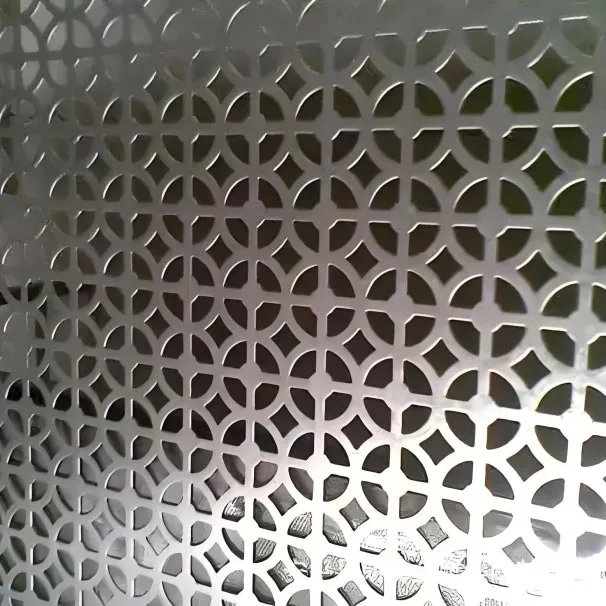
At the heart of every successful perforated metal application lies a deep understanding of these technical nuances. Our team of experts is adept at guiding clients through this selection process, ensuring that every specification contributes optimally to the desired functional outcome and long-term durability.
The Precision Art of Manufacturing: A Deep Dive into Perforated Metal Production
The manufacturing of perforated metal for sale is a sophisticated process that combines advanced machinery with meticulous quality control to produce sheets with precise and consistent hole patterns. While the raw material itself may undergo initial processes like casting or forging to form large ingots, and subsequent rolling to create coils or flat sheets, the critical perforation stage primarily involves precision punching or stamping.
Detailed Manufacturing Process Flow:
-
Material Procurement and Preparation:
The process begins with sourcing high-quality metal coils or flat sheets (e.g., stainless steel, carbon steel, aluminum, brass) from certified suppliers. The material must meet stringent specifications for chemical composition, mechanical properties (e.g., tensile strength, yield strength, elongation), and surface finish. For instance, for critical applications in the petrochemical industry, materials like 316L stainless steel, known for its superior corrosion resistance against aggressive chemicals, are specifically selected. These materials are often pre-cleaned or pre-treated depending on the final application.
-
Tooling Design and Fabrication:
Precision tooling is paramount. Dies and punches, typically made from hardened tool steel, are custom-designed based on the desired hole size, shape, pitch, and pattern. Advanced CAD/CAM software is used to design these tools, ensuring accuracy to micrometers. The longevity and precision of the tools directly influence the quality and consistency of the perforations and the overall product life. For complex patterns or very fine holes, laser cutting might also be employed, though stamping is more common for bulk production.
-
Perforation (Punching/Stamping):
The core of the process. Metal sheets are fed into high-speed, numerically controlled (CNC) punching machines. These machines utilize precision-aligned punches and dies to create thousands of holes per minute. The CNC control ensures that holes are consistently spaced according to the specified pitch and pattern (e.g., 60-degree staggered, 90-degree straight). Modern punching machines are capable of handling various material thicknesses and maintaining tight tolerances. The process is highly efficient, minimizing material waste and maximizing output.
-
Flattening and Leveling:
The punching process can sometimes introduce stress into the metal, leading to minor deformation or bowing. To achieve a perfectly flat sheet, the perforated material passes through precision leveling machines. These machines use rollers to remove stresses and ensure the sheet lies flat, which is critical for ease of installation and aesthetic appeal in applications like architectural facades or ceiling panels.
-
Deburring and Cleaning:
The punching process can leave small burrs or sharp edges around the holes. Deburring machines use brushes, grinding, or chemical processes to remove these imperfections, ensuring a smooth, safe edge and improving the overall finish. After deburring, the sheets are thoroughly cleaned to remove any residual oils, debris, or metal fines, particularly important for applications in food processing or cleanroom environments.
-
Finishing (Optional):
Depending on the application, additional finishing processes may be applied. These can include:
- Powder Coating: For enhanced corrosion resistance, color, and aesthetic appeal.
- Anodizing: For aluminum sheets, improving hardness, corrosion resistance, and allowing for various colors.
- Galvanizing: For carbon steel, providing a sacrificial zinc layer for superior rust protection in harsh outdoor or industrial settings, commonly seen in water treatment and drainage systems.
- Polishing: For a highly reflective or satin finish, particularly for architectural or decorative uses.
-
Cutting and Fabrication:
The finished large perforated sheets are then cut to the client's specified dimensions using shears or laser cutters. Further fabrication processes such as bending, rolling, welding, or forming can be performed to create complex shapes or components tailored to specific project requirements.
Rigorous Quality Control & Compliance:
Throughout every stage of the manufacturing process, strict quality control measures are implemented to ensure that the perforated metal for sale meets the highest industry standards.
- Material Inspection: Raw materials are inspected upon arrival for chemical composition, mechanical properties (e.g., hardness, tensile strength per ASTM A240 for stainless steel), and surface defects.
- Dimensional Accuracy: Hole size, pitch, and overall sheet dimensions are continuously monitored using precision calipers, optical comparators, and automated vision systems. Tolerances are typically held to industry standards like those outlined by the Industrial Perforators Association (IPA) or international standards such as ISO 3310-1 for test sieves.
- Visual Inspection: Sheets are inspected for burrs, uneven perforations, surface blemishes, and overall aesthetic quality.
- Mechanical Testing: Sample sheets may undergo additional mechanical tests, such as tensile strength tests (to ensure the integrity of the perforated material) or corrosion resistance tests (e.g., salt spray tests for coated materials).
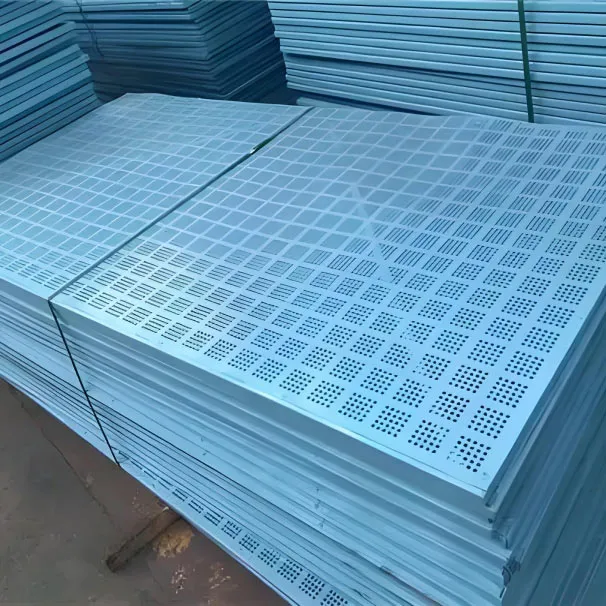
Adherence to international standards such as ISO 9001 (Quality Management Systems) ensures consistent product quality and process efficiency. For specific applications, compliance with standards like ANSI (American National Standards Institute) or industry-specific certifications is guaranteed. This rigorous process ensures that every sheet of perforated metal for sale not only meets but often exceeds client expectations for performance, durability, and a predictable service life, even in demanding environments like petrochemical refining or heavy metallurgy.
Unlocking Strategic Advantages: The Multifaceted Benefits of Perforated Metal
The inherent design and manufacturing precision of perforated metal for sale translate into a host of significant technical and operational advantages, making it a preferred material choice across diverse industries. Its unique properties contribute to enhanced performance, cost efficiency, and improved environmental impact in various applications.
Key Technical Advantages:
- Exceptional Strength-to-Weight Ratio: By removing material strategically, perforated metal retains significant structural integrity while drastically reducing overall weight compared to solid sheets. This is crucial in applications like aerospace, automotive, and large-scale architectural facades where weight reduction translates directly into energy savings and reduced structural loads. For example, a 30% open area sheet can be considerably lighter than its solid counterpart, leading to reduced shipping costs and easier installation.
- Optimized Airflow and Ventilation: The precisely engineered open area allows for controlled air passage. This is vital for HVAC systems, cooling components in machinery, and ventilation panels in buildings. Proper airflow prevents overheating, maintains optimal operating temperatures, and improves air quality, contributing to energy efficiency by reducing the reliance on active cooling systems. In a typical data center, using perforated server rack doors can improve airflow efficiency by 30-40% compared to solid doors, significantly reducing cooling energy consumption.
- Superior Sound Attenuation and Acoustic Control: Perforated metal, especially when combined with acoustic insulation materials, excels at absorbing and diffusing sound waves. The perforations trap sound energy, converting it into heat, thus reducing reverberation and noise levels. This makes it ideal for sound barriers, acoustic panels in recording studios, industrial noise enclosures, and architectural ceilings in busy public spaces. Studies show that a well-designed perforated panel can achieve Noise Reduction Coefficients (NRC) of 0.80 or higher.
- Effective Filtration and Separation: The consistent and precise hole sizes enable perforated metal to act as an effective filter or sieve. It can separate solids from liquids or gases, grade particles by size, and protect sensitive equipment from larger debris. This is indispensable in water treatment, food processing, pharmaceutical manufacturing, and mining industries for processes like dewatering, screening, and material separation. Its robust nature allows it to withstand high pressures and abrasive materials, offering a longer service life than woven meshes in many filtration scenarios.
- Corrosion Resistance and Enhanced Durability: When manufactured from corrosion-resistant materials like stainless steel (e.g., 316L for chemical resistance) or treated with protective coatings (e.g., galvanization, powder coating), perforated metal offers exceptional longevity even in harsh, corrosive environments such as coastal areas, chemical plants, or wastewater treatment facilities. This resilience translates into reduced maintenance costs and extended operational life, providing superior ROI.
- Aesthetic Versatility and Design Flexibility: Beyond its functional benefits, perforated metal offers immense aesthetic potential. The variety of hole shapes, patterns, and finishing options allows architects and designers to create unique visual effects, control light penetration, and enhance the overall appearance of structures. It can serve as decorative facades, sunscreens, balustrades, and interior design elements, blending functionality with modern design sensibilities.
- Improved Safety and Security: Perforated metal can provide excellent protection without completely obstructing visibility. It is used for machine guards, protective barriers around hazardous equipment, and security screens, offering both protection from moving parts or projectiles and allowing for ventilation and visual monitoring.
- Energy Efficiency: Through optimized airflow, controlled light diffusion (reducing need for artificial lighting), and reduced material weight, perforated metal indirectly contributes to significant energy savings. For example, perforated sunshades can reduce solar heat gain by up to 80%, substantially cutting cooling loads in buildings.

These advantages collectively position perforated metal for sale as a cost-effective and high-performance solution for a wide array of industrial and commercial challenges. Its ability to combine multiple functionalities in a single material solution makes it an indispensable component for innovative and sustainable project development.
Real-World Impact: Diverse Application Scenarios and Illustrative Case Studies
The extraordinary adaptability and functional versatility of perforated metal for sale enable its widespread adoption across virtually every industrial and commercial sector. Its integration solves complex engineering challenges, enhances operational efficiency, and contributes to both safety and aesthetics. Below are detailed explorations of its application in key industries, highlighting specific use cases and their benefits.
Architectural and Construction Sector:
- Building Facades and Sunscreens: Perforated metal sheets are extensively used as external building cladding and sunshades. Their open area allows for controlled light penetration and air circulation, reducing heat gain and contributing to energy savings by minimizing reliance on HVAC systems. For example, a project involving a large office building in a hot climate utilized custom-perforated aluminum panels with a 40% open area. This design reduced internal temperatures by an average of 5°C during peak summer months, leading to a 20% reduction in air conditioning energy consumption.
- Balustrades, Staircases, and Railings: Offering both safety and aesthetic appeal, perforated metal provides secure barriers without completely obstructing views. The patterns can also create unique visual effects as light filters through, enhancing the architectural ambiance.
- Ceiling Tiles and Wall Panels: Beyond aesthetics, perforated ceiling tiles significantly improve acoustic environments in commercial spaces, schools, and auditoriums by absorbing sound waves and reducing reverberation. They are often backed with sound-absorbing material to maximize Noise Reduction Coefficient (NRC) ratings, typically achieving NRC values of 0.70 to 0.90 for optimal sound control.
Industrial and Manufacturing Applications:
- Filtration and Screening (Petrochemical, Water Treatment, Food & Beverage): Perforated metal is indispensable for filtration in various forms:
- Refining and Chemical Processing: Used in catalytic converters, support grids for filtration media, and separation screens for granular materials. The corrosion resistance of stainless steel 316L perforated sheets ensures longevity in highly acidic or alkaline environments, crucial for preventing process contamination and equipment failure.
- Water and Wastewater Treatment: Employed as screens for preliminary filtration, protecting pumps and clarifiers from large debris. Galvanized carbon steel or stainless steel perforated mesh ensures durability in submerged, often corrosive, conditions, extending the operational life of critical infrastructure.
- Food and Beverage Industry: Used for grain drying, coffee bean processing, malting floors, and sieves for food grading. Stainless steel perforated metal mesh meets stringent hygiene standards (e.g., FDA compliance for certain grades) due to its ease of cleaning and resistance to bacterial growth.
- Machine Guards and Safety Barriers: Providing essential protection against moving parts and preventing debris projection in manufacturing plants. The perforations allow for visual inspection and airflow for cooling, while maintaining a robust physical barrier compliant with OSHA safety standards.
- HVAC Systems: Integrated into air diffusers, vents, and grilles to regulate airflow, reduce noise, and distribute conditioned air efficiently. The specific open area and hole pattern can be tailored to achieve desired air velocity and throw characteristics, optimizing energy consumption in large commercial buildings.
- Noise Control (Metallurgy, Power Generation): In noisy industrial environments like foundries, power plants, and manufacturing facilities, perforated metal enclosures and baffles are critical for reducing occupational noise exposure and complying with environmental regulations. When backed with mineral wool or fiberglass, these panels can achieve significant decibel reductions, often lowering sound levels by 15-25 dB.
Automotive and Transportation:
- Exhaust Systems and Mufflers: Used as internal components in mufflers to dissipate sound waves and as heat shields, enduring high temperatures and corrosive exhaust gases.
- Grilles and Filters: Employed in vehicle grilles for airflow to radiators and engines, as well as in various air and oil filters, offering robust and efficient filtration.
Agricultural and Mining:
- Grain Silos and Feed Mills: Perforated sheets are used for aeration floors, allowing air to circulate through grains to prevent spoilage, and in sorting equipment for separating grains by size.
- Mining Screens: Heavy-gauge perforated mesh is vital for screening and grading minerals, resisting abrasion and heavy impact in demanding mining operations.

These varied applications underscore the critical role perforated metal for sale plays in supporting diverse industries. Its ability to be engineered for specific performance criteria, combined with its inherent durability and aesthetic potential, makes it an indispensable material for addressing both current and future industrial challenges. Our extensive experience across these sectors enables us to provide tailored solutions that meet the precise demands of each unique application.
Strategic Sourcing: Manufacturer Comparison and Customization Solutions for Perforated Metal
When seeking perforated metal for sale, the choice of manufacturer is as critical as the product specifications themselves. A reliable supplier offers not just a product, but a partnership rooted in expertise, advanced manufacturing capabilities, and a commitment to quality and service. Understanding how to evaluate manufacturers and leverage their customization options can significantly impact project success and long-term cost-efficiency.
Key Considerations When Comparing Manufacturers:
- Manufacturing Capabilities and Technology: Assess the manufacturer's equipment—do they use modern CNC punching machines, laser cutters, and advanced leveling equipment? This indicates their ability to produce precise, high-quality perforations consistently and handle large volumes. A manufacturer with diverse capabilities can offer a wider range of hole shapes, sizes, and patterns.
- Material Expertise and Sourcing: A reputable manufacturer will have established relationships with certified material suppliers, ensuring the raw metal sheets meet international standards (e.g., ASTM, EN). Their expertise in various alloys (stainless steel, aluminum, carbon steel, etc.) is crucial for recommending the optimal material for specific environmental conditions and performance requirements.
- Quality Assurance and Certifications: Look for manufacturers with recognized quality management certifications such as ISO 9001. This indicates a robust system for quality control at every stage, from material inspection to final product verification. Adherence to industry standards (e.g., IPA for perforating tolerances) is also a strong indicator of reliability.
- Customization and Engineering Support: The ability to provide bespoke solutions is a significant differentiator. Can they develop custom tooling for unique hole patterns? Do they offer secondary fabrication services like bending, welding, or specialized finishing (e.g., complex powder coating)? Furthermore, strong engineering support—where experts can advise on optimal design for performance and cost—is invaluable.
- Lead Times and Production Capacity: Evaluate their typical lead times for both standard and custom orders. A large production capacity indicates they can handle urgent or high-volume orders without significant delays, crucial for keeping large-scale projects on schedule.
- Experience and Track Record: A manufacturer with a long history and a diverse portfolio of successful projects across various industries (e.g., petrochemical, architectural, HVAC) demonstrates proven reliability and expertise. Customer testimonials and case studies can provide valuable insights into their performance and customer satisfaction.
- After-Sales Support and Warranty: A commitment to customer satisfaction extends beyond delivery. Inquire about their warranty policies, technical support, and responsiveness to any post-delivery issues.
Leveraging Customization for Optimal Solutions:
Beyond standard sheets, the true power of perforated metal for sale lies in its potential for customization. Tailored solutions can significantly enhance functionality, aesthetics, and cost-effectiveness for specific applications.
- Bespoke Hole Patterns and Shapes: While standard round or square holes are common, manufacturers can create unique patterns, intricate designs, or even image-based perforations for architectural art installations, branding, or highly specialized filtration needs.
- Variable Open Areas: For applications requiring zones with different airflow or light transmission rates, a single sheet can be perforated with varying open area percentages across its surface. This is particularly useful in climate control systems or decorative screens.
- Specific Margins and Unperforated Areas: Custom margins allow for precise attachment points, unperforated zones for specific mounting or welding, or integrating solid sections within a perforated sheet for structural reinforcement or aesthetic transitions.
- Advanced Forming and Fabrication: Beyond flat sheets, manufacturers can form perforated metal into complex three-dimensional shapes, cylinders, cones, or corrugated panels. This is crucial for components in machinery, architectural elements, or specialized filtration vessels.
- Specialized Finishes and Coatings: Custom finishing options include specific RAL color powder coatings for branding or aesthetic integration, specialized anodizing for enhanced hardness and corrosion resistance, or electropolishing for pharmaceutical-grade cleanliness and enhanced corrosion resistance.

Partnering with a manufacturer capable of delivering these customized solutions ensures that the perforated metal mesh perfectly aligns with the project's unique functional, structural, and aesthetic demands. This collaborative approach leads to optimized performance, streamlined installation, and ultimately, a more successful outcome. Our commitment to bespoke solutions means we work closely with clients from conceptualization to delivery, ensuring every detail is precisely addressed.
Ensuring Trust and Reliability: Our Commitment to Quality, Delivery, and Support
In the B2B landscape, trust is built on consistency, transparency, and unwavering commitment to client success. When procuring perforated metal for sale, it's not merely about the product itself but the entire ecosystem of support, quality assurance, and ethical business practices provided by the supplier. We pride ourselves on establishing and maintaining this trust through rigorous standards and dedicated customer service.
Comprehensive Quality Assurance and Certifications:
Our dedication to quality is non-negotiable and is embedded in every stage of our manufacturing process.
- ISO 9001:2015 Certified: We operate under a robust Quality Management System (QMS) certified to ISO 9001:2015. This international standard ensures that our processes are consistently managed to meet customer and regulatory requirements, driving continuous improvement in product quality and customer satisfaction. Regular external audits verify our adherence to these stringent guidelines.
- Adherence to ASTM & EN Standards: All our perforated metal products comply with relevant American Society for Testing and Materials (ASTM) and European Norm (EN) standards for material composition, mechanical properties, and dimensional tolerances. For instance, our stainless steel products conform to ASTM A240, ensuring precise material specifications.
- Rigorous In-House Testing: Beyond external certifications, we conduct comprehensive in-house testing, including dimensional checks, visual inspections, and, where applicable, material property verification. Each batch undergoes stringent checks to confirm hole size, pitch accuracy, open area percentage, and flatness, ensuring every sheet meets the specified criteria before shipment.
- Traceability: We maintain full traceability of our raw materials and production batches, allowing for complete transparency and accountability from source to finished product. This is particularly vital for critical applications in regulated industries.
Transparent Delivery Cycles and Logistics:
Timely delivery is crucial for project continuity. We prioritize efficient production scheduling and transparent communication regarding lead times.
- Standard Orders: For common material types and perforation patterns, our typical lead time ranges from 2-4 weeks, depending on order volume and current production load.
- Custom and Complex Orders: Specialized perforated metal sheet designs requiring custom tooling or extensive secondary fabrication may have lead times of 4-8 weeks. Our project managers provide detailed timelines at the quotation stage.
- Expedited Options: We understand that urgent requirements arise. Depending on material availability and production capacity, expedited manufacturing and shipping options can be arranged to meet critical deadlines, subject to an agreed-upon surcharge.
- Global Logistics Network: With extensive experience in international shipping, we partner with reliable logistics providers to ensure secure and timely delivery to destinations worldwide, handling all necessary documentation and customs procedures.
Comprehensive Warranty and Customer Support:
Our relationship with clients extends far beyond the point of sale.
- Product Warranty: All our perforated metal products are backed by a comprehensive warranty covering manufacturing defects and material integrity. Specific warranty terms vary by product type and application, typically ranging from 1 to 5 years. Details are provided with each quotation and order confirmation.
- Responsive Technical Support: Our team of experienced engineers and product specialists is available to provide technical assistance, answer queries regarding product specifications, installation best practices, and troubleshooting. We offer pre-sale consultation and post-sale support to ensure optimal product performance.
- Dedicated Account Management: Each client is assigned a dedicated account manager who serves as a single point of contact, ensuring seamless communication and personalized service from inquiry to delivery and beyond.
- Customer Feedback Integration: We actively solicit customer feedback to continually improve our products and services. Client satisfaction is our ultimate measure of success, and we are committed to promptly addressing any concerns.
By combining superior product quality with unwavering commitment to service and transparent processes, we build enduring partnerships. Our goal is to be your trusted provider of perforated metal for sale, ensuring reliability, performance, and peace of mind for your most critical projects.
Frequently Asked Questions (FAQ) about Perforated Metal
Q1: What is the typical service life of perforated metal, particularly in corrosive environments?
A1: The service life of perforated metal largely depends on the material chosen, the specific environmental conditions, and proper installation. For highly corrosive environments such as petrochemical plants or marine applications, materials like Stainless Steel 316 or 316L are recommended due to their superior resistance to pitting and crevice corrosion, often yielding a service life of 20-50 years or even longer with proper maintenance. For carbon steel, applying a hot-dip galvanized coating can extend its life significantly, typically 15-30 years in outdoor industrial settings, by providing cathodic protection. Uncoated carbon steel in wet or aggressive conditions would have a much shorter lifespan.
Q2: How does "open area percentage" affect the performance of perforated metal?
A2: The open area percentage is a critical design parameter that directly impacts several performance aspects of perforated metal for sale. A higher open area (e.g., 50-70%) means more holes relative to the total surface, which facilitates maximum airflow, light transmission, and fluid flow, ideal for ventilation, sieving, and architectural sunscreens. Conversely, a lower open area (e.g., 20-35%) indicates more solid metal, resulting in greater structural strength, rigidity, and enhanced sound attenuation (when backed with insulation). It also offers finer filtration capabilities. The optimal open area is a balance between these functional requirements and the necessary structural integrity for the application.
Q3: Can perforated metal sheets be welded or fabricated further after perforation?
A3: Yes, perforated metal sheets are highly adaptable and can be subjected to various secondary fabrication processes. They can be cut, bent, rolled, and welded to create complex shapes or integrate into larger assemblies. The specific welding technique (e.g., TIG, MIG) and filler material will depend on the base metal type and thickness. It's important to consider the heat effects of welding, especially on thinner gauges or materials with coatings. Professional fabrication services are recommended to maintain the integrity and aesthetic quality of the perforated pattern and avoid distortion.
Q4: What inspection standards should I look for when purchasing perforated metal mesh?
A4: For assurance of quality, always verify that the perforated metal for sale supplier adheres to recognized international and industry standards. Key standards include:
- ISO 9001: For the manufacturer's Quality Management System, indicating consistent processes and product quality.
- ASTM International Standards: For material composition (e.g., ASTM A240 for stainless steel plates, sheets, and strips), mechanical properties, and sometimes for specific product types (e.g., ASTM E2016 for industrial perforated plate and screens).
- Industrial Perforators Association (IPA) Standards: For industry-specific tolerances on hole size, pitch, flatness, and margins.
- ANSI (American National Standards Institute): Relevant for specific product applications or industry requirements in North America.
Q5: How does perforated metal contribute to energy efficiency?
A5: Perforated metal contributes to energy efficiency in several ways:
- Reduced HVAC Loads: As sunscreens or facades, they can significantly reduce solar heat gain, lessening the burden on air conditioning systems and leading to substantial electricity savings.
- Optimized Ventilation: In HVAC systems or machinery enclosures, precise perforations ensure efficient airflow, which reduces fan energy consumption and prevents equipment overheating.
- Daylight Harvesting: When used in facades or interior screens, they can diffuse natural light, reducing the need for artificial lighting during daylight hours.
- Lightweight Construction: The reduced weight of perforated sheets compared to solid metal means lower material transport costs and less structural support required for buildings, which can indirectly lead to energy savings in construction and long-term maintenance.
Partner with Us for Your Perforated Metal Needs
Choosing the right partner for your perforated metal for sale requirements is paramount to the success of your project. Our commitment to precision engineering, adherence to global quality standards, and dedicated customer support ensures that you receive not just a product, but a complete solution tailored to your exact specifications. With extensive experience across diverse industries, we are equipped to handle complex challenges and deliver superior performance.
From material selection and technical specifications to custom fabrication and timely delivery, our team works closely with you to guarantee optimal results. Experience the difference that expertise, reliability, and innovation bring to your next project.
Contact us today to discuss your specific requirements and discover how our high-quality perforated metal mesh solutions can enhance your operations and designs.
References
- ASTM International. (2023). ASTM A240/A240M: Standard Specification for Chromium and Chromium-Nickel Stainless Steel Plate, Sheet, and Strip for Pressure Vessels and for General Applications. West Conshohocken, PA: ASTM International.
- Industrial Perforators Association (IPA). (2022). Perforated Metal Design Handbook. Glen Ellyn, IL: IPA.
- ISO (International Organization for Standardization). (2015). ISO 9001:2015 - Quality management systems — Requirements. Geneva, Switzerland: ISO.
- Miller, D. & Smith, P. (2020). "Acoustic Performance of Perforated Panels in Building Design." Journal of Architectural Engineering, 26(3), 04020017.
- Wang, L., & Chen, G. (2019). "Optimization of Perforated Facades for Energy Efficiency in Hot Climates." Energy and Buildings, 182, 123-134.
- Zhang, H., & Li, Q. (2021). "Corrosion Resistance of Galvanized Steel in Industrial Atmospheres: A Long-Term Study." Corrosion Science, 187, 109503.
Post time: Aug . 21, 2025 22:40
